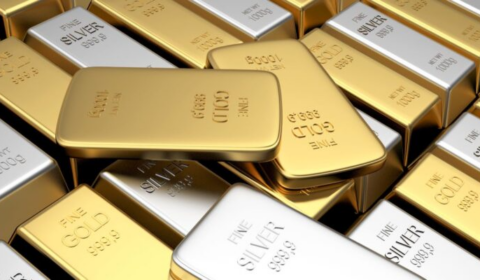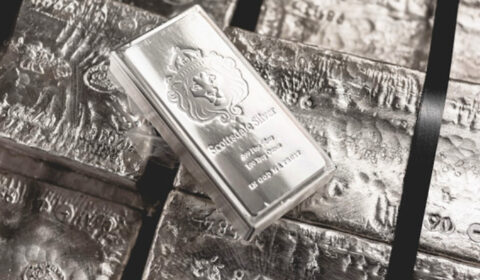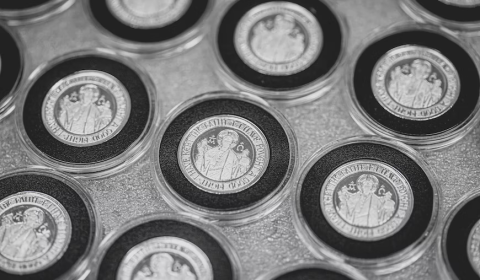The Current Gold and Silver Market Pricing Explained
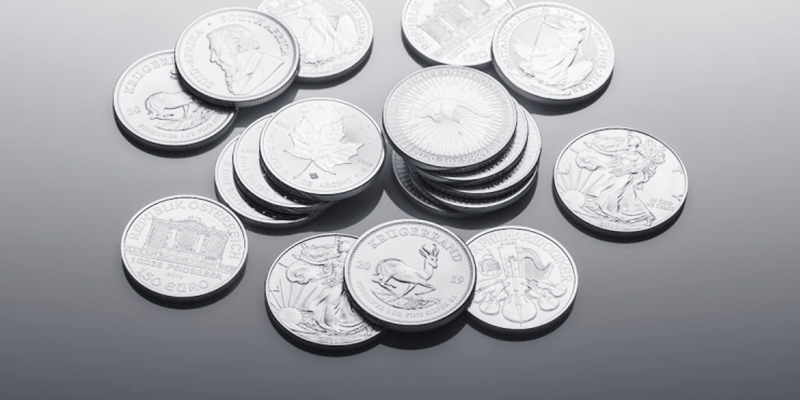
The following article is created by Orion Metal Exchange for the benefit of our investors and perspective investors alike. We seek to provide relevant content concerning precious metals and the impact caused by economic and geopolitical trends that will most likely place impact on your financial future. If you are interested in learning about precious metal investing, call 1-800-559-0088, for a FREE investor kit.
For long-term investors, gold and silver are great asset options to diversify and secure a portfolio when inflation is accelerating, and economic uncertainty is present.
Currently, gold is approximately 80 times more expensive than silver. When measured in U.S. dollars, the annual global production of gold is ten times the value of the annual global production of silver. Due to silver’s industrial and technological applications, we are constantly depleting the global supply of silver. In contrast, the global gold supply has continued to increase for the past several years. Both metals are expected to increase with inflation. Gold demand will be influenced by Jewelry, Central Bank buying, and geopolitical risk management. Silver demand will be influenced by electronics, jewelry, automotive, solar, and geopolitical risk management. Due to supply and demand factors, gold and silver will likely move independently and offer varying percentages of growth moving forward.
Let’s review what determines the current and liquid market values of gold and silver.
How Is Gold Priced?
The price of gold is fixed at the London Bullion Market Association every day, with participants like Barclays, Standard Chartered, Goldman Sachs, JPMorgan Chase, and Morgan Stanley fixing the price. The retail consumers, retail investors, jewelers, and precious metals investment companies either buy directly from wholesale sources, sovereign mints, or over the counter (OTC) markets. The physical product purchase price will vary from the spot contract price. Bullion trading serves as the source of information for delivery demand, determining the physical supply and spot pricing for gold.
How Is Silver Priced?
Like gold, silver is priced through buyer sentiments, demand, and supply.
Commodities like gold, silver, crude oil, wheat, etc., are all secured in future contracts that forecast their future demand. The spot price fixed for silver is the theoretical price of an ounce that is available immediately. The price at a precious metal exchange will vary for bars or other silver products from that price globally.
While there are many exchange centers globally ̶ London, China, Zurich ̶ the biggest impact on silver’s spot pricing is by the COMEX division of the New York Mercantile Exchange as a significant number of future contracts are traded here. Geopolitical events, currency fluctuations, bank interest rates, and trade deficits can all affect the prices of silver.
Gold and Silver: Chemical Properties and Global Application
While gold and silver coins are both considered safe-haven investments, the two have slightly different properties, which set a precedent for buyer sentiment that resulted in gold costing more than silver. Some of these properties will be discussed here.
Both gold and silver are metals that can conduct heat and electricity. However, gold retains its luster longer than silver, i.e., its conducting function lasts longer than silver’s because it does not tarnish easily. Since gold is one of the most unreactive metals known, it can last years without reacting with air or water to retain its shine. Gold is virtually indestructible.
Gold is also very malleable, i.e., it can bend easily into different shapes and hence, an ideal candidate for jewelers who use beautiful and long-lasting substances for their products.
Most importantly, gold is much rarer than silver. Historically existing as a status symbol for the rich and powerful. Gold is money. Central Banks and governments own gold to offset debt and legitimize fiat currencies. In contrast, silver is commonly viewed as a barter instrument. Silver’s technological applications are necessary in the production of products society cannot live without. For example, cell phones, cameras, computers, and batteries.
Gold and Silver Future Projections
1) Investing News Network reported, Keith Neumeyer, CEO of First Majestic Silver, has frequently said he believes the white metal could climb even further, to hit the US$100 mark or even reach as high as US$130 per ounce.
2) FX Empire reported, gold trading above $10,000 and silver near $300 is where President of Financial Sense Wealth Management, James Puplava sees prices later this decade.
3) Reuters reports, Gold could surge up to $3,000 over the next 12 months, Citi analysts said, we see the market supported well above $2,000-2,200/oz and regularly testing nominal ATHS into end-2024” before surging to $3,000 in 2025, the firm added.
4) Investing-com reports, UBS updated its outlook for silver prices, projecting further growth due to robust industrial demand and a potential undersupply in the market. The financial services firm increased its silver forecasts by $4 per ounce across various future dates, anticipating the metal to reach $34 per ounce by the end of September, $36 per ounce by the end of 2024, and maintain that level through the end of March 2025.
5) CNBC reports, Separately, analysts at ROTH Capital Partners have tipped gold and silver prices to push even higher over the coming months. The price of gold “now appears poised to move higher and break out of the recent highs made in April. We can set a technical upside price target to $2,600,” JC O’Hara, chief technical strategist at ROTH Capital Partners, said in a research note published Sunday. For silver, O’Hara said if prices can break above $30, “it will have little resistance until the $35/$37 area.”
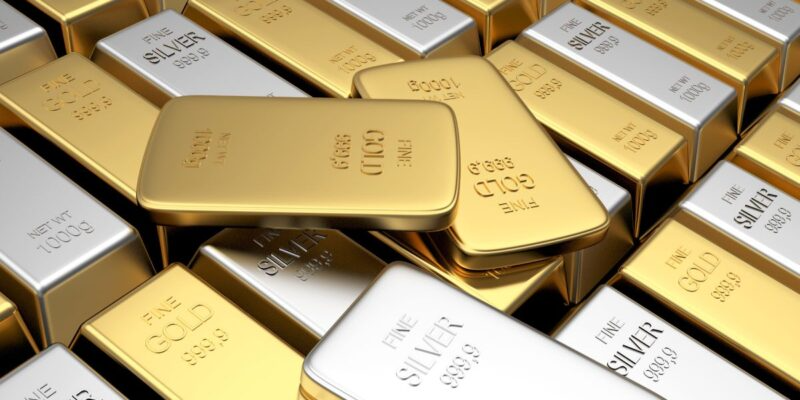
The Value in Gold and Silver Diversification
Physical precious metals are considered an insurance policy for your portfolio. Precious metal products, such as gold and silver coins can be utilized as a hedge against geo-political uncertainty. Gold and silver are used as investment vehicles to protect against fiat currency devaluation and arbitrary government policies. When the values of paper assets fall, precious metals rise in value and promote financial stability.
Gold and silver are not prone to mismanagement by corporations or governments. Gold and silver coins are not subject to arbitrary government policy changes. For instance, when you own a gold Eagle coin, no one can borrow or loan against your gold coin without your consent. Physical silver and gold coins are free from the risk associated with debt. Proper diversification is the key to reducing risk and building wealth.
Simple Answers to Common Questions: FAQ Spot
Where is the gold price expected to be within the next two years?
Bank of America analysts predict a potential surge in gold prices, with estimates reaching $3,000 per ounce within the next 12-18 months.
Is silver about to skyrocket?
Peter Krauth, a major silver market analyst and author of “The Great Silver Bull” believes that silver is especially positioned to be one of the largest trades in the commodities market in the near future.
Is it smart to buy gold and silver now?
Gold prices could surge up to $3,000 over the next 12 months, Citi analysts said, as a combination of strong physical demand, central bank purchases, and macroeconomic factors continue to support a bullish outlook for the yellow metal. They project silver prices to rise towards $38 per ounce over the next year, driven by strong industrial demand, particularly from the solar PV and electric vehicle sectors.
The following article is created by Orion Metal Exchange for the benefit of our investors and perspective investors alike. We seek to provide relevant content concerning precious metals and the impact caused by economic and geopolitical trends that will most likely place impact on your financial future. If you are interested in learning about precious metal investing, call 1-800-559-0088, for a FREE investor kit.


